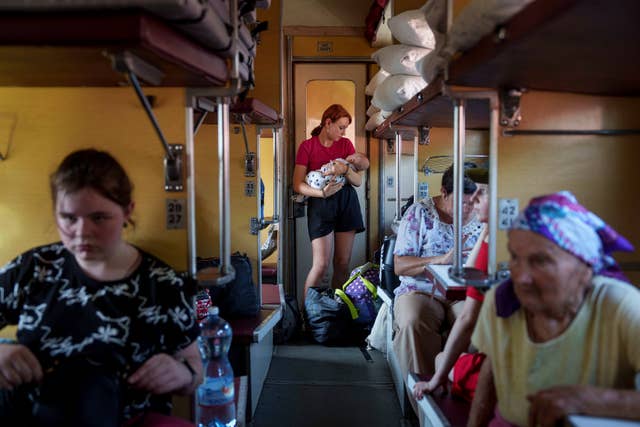Ukraine’s military says it used high-precision US glide bombs to strike Russia’s Kursk region, and that it has recaptured some territory in the eastern Ukrainian region of Kharkiv that has been under a Russian offensive since spring.
Ukraine’s Air Force Commander Lieutenant General Mykola Oleschuk issued a video on Thursday night purporting to show a Russian platoon base being hit in Kursk, where Ukrainian forces launched a surprise cross-border incursion on August 6.
He said the attack with GBU-39 bombs, which were supplied by the US, resulted in Russian casualties and the destruction of equipment.

Many of Ukraine’s backers oppose the country using donated weapons for anything but defensive purposes.
However, Ukraine has argued that its Kursk incursion is essentially defensive and aimed at minimising attacks on Ukrainian soil from that Russian region.
US officials have said that Washington supports Ukraine’s use of shorter-range weapons such as glide bombs in its attacks across the border.
The US so far has only put a limit on the use of longer-range ATACMS missiles for strikes deep into Russia.
White House national security spokesman John Kirby said on Friday that US officials have been in near-daily contact with Ukrainian counterparts and have made no recent changes to guidance on how US weapons can be used in the Kursk offensive.
“They are allowed to use US provided material to defend themselves against Russian aggression. And, as you know, the president allowed them to use US munitions across that border to deal with imminent threats,” Mr Kirby told reporters in Washington.
Mr Kirby added that it is unclear how successful Ukraine’s operation in Kursk will be over the long term. Russian officials reported some success in turning back Ukrainian forces in some areas of the Kursk region on Friday.

Ukraine and its Western allies hope that the regained momentum could strengthen Kyiv’s hand on the diplomatic front.
A visit to Kyiv by Indian Prime Minister Narendra Modi, who met on Friday with President Volodymyr Zelensky, was being closely watched.
There are Ukrainian hopes that Mr Modi, who has maintained cordial ties and economic relations with Russian President Vladimir Putin, could play a role in forging a mediated peace.
The incursion into Russia has highlighted Russian vulnerabilities but also further stretched Ukrainian forces, who already were fighting on a frontline running hundreds of miles.
It has possibly compromised Ukraine’s ability to hold back Russian forces who have slowly but steadily gained ground in the Donetsk region, diverting Ukrainian forces who otherwise could bolster defence there.
It is not clear how long Ukraine will be able to hold the land it has seized in Russia.
The Russian Defence Ministry on Friday said that its troops turned back Ukrainian attempts to advance on the Kursk region’s villages of Borki and Malaya Loknya.

Ukraine’s 3rd Separate Assault Brigade said in a statement published late on Thursday that Ukrainian soldiers took control of an area that was held by a Russian battalion, and some strongholds.
Brigade Commander Andrii Biletskyi said that they attacked Russian troops that had superiority “and won”, adding that the ratio of forces on the battlefield was 2.5:1 in Moscow’s favour.
The Associated Press was unable to independently verify the claims, and there was no immediate comment from Russia.
Russia launched an offensive in the Kharkiv region in May that led to some gains but soon stalled.
Fighting in that area has diminished as the Russian army has concentrated its efforts in Donetsk, part of the industrial Donbas region that Moscow formally annexed but does not fully control.
Russia’s springtime advance on Kharkiv was seen as a sign that Ukraine’s position was weakening amid delays of Western military aid.






